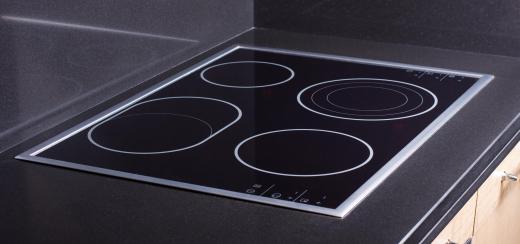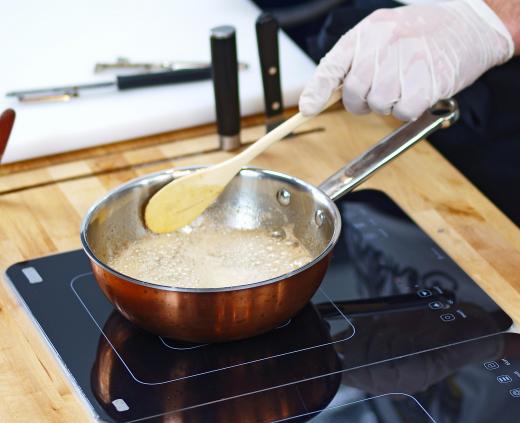What Is Induction Heating?
Induction heating relies on electromagnetism to generate heat in a target object. This process is most effective when employed to heat ferrous metals but can be used to heat any material that conducts electricity. A very high frequency alternating current is used to create a magnetic field, which in turn generates both electrical eddy currents and heating from friction on a microscopic level in the object to be heated. Induction heating has a variety of uses ranging from home cooking to specialized industrial applications.
The heart of any induction heating system is a work coil, which carries the alternating current and acts as an electromagnet. An object to be heated through induction, sometimes referred to as the work piece, is then placed inside or near the coil. Induction generates shifting electrical currents in the work piece, and these currents generate heat as they overcome the inherent resistance in the conductor.

A second process speeds the heating of ferrous metals. Electrical currents do manifest when ferrous metal such as iron is heated through induction. The magnetic forces also act on the metallic crystals that make up these materials. Rapidly shifting magnetic fields set up a vibration in ferrous metals, and this produces additional heat through friction.

Inductive heating is used in many industrial applications because it can be controlled quite precisely, and because no heat transfer or open flames are required. Small amounts of induction suffice to melt and fuse plastics, and an induction heating machine is often used for this purpose. The heating of these substances can be carefully controlled by adding only small amounts of conductive materials to the specific areas that require heating.
Metals can be heated rapidly and precisely through induction. This is especially useful when relatively small amounts of metal need to be heated, as inductive heating requires only a modest amount of physical equipment. The speed with which metals are heated can also be controlled with great precision by modifying the configuration of the circuitry associated with the work coil.
One particularly common application of induction heating is in cooking devices. Stove top units that rely on induction are generally designed to operate only with ferrous metal cookware. Induction heating is very useful in kitchen applications because the actual cooking surface is not directly heated, which improves kitchen safety. The heat generated by induction is also available nearly instantly, as opposed to the heat produced by cooking elements that generate heat through resistance and then transfer that heat to cooking vessels.
If you have a stove that uses induction heating and you’re looking for the appropriate cookware, you can search for cookware for glass-top stoves. Most cookware brands will categorize their products this way since stoves that use induction heating often have glass tops, so having cookware that both works well with induction heating and won’t damage a glass top stove is necessary. Fortunately, induction heat stoves are quite common and most new cookware is made to work with them.
AS FEATURED ON:
AS FEATURED ON:












Discuss this Article
Post your comments